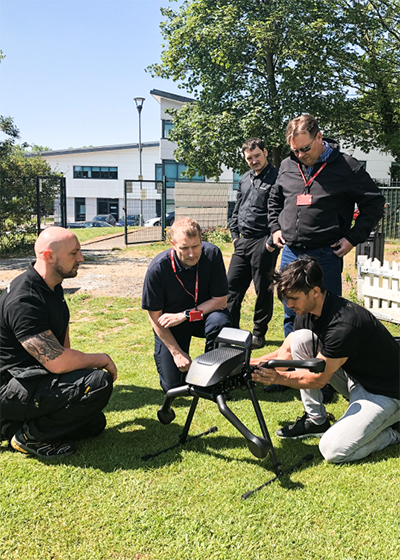Earlier this year, the Home Office funded the National Police Air Service (NPAS) to lead a project aiming to understand the capabilities, and potential benefits, of using Beyond Visual Line of Sight (BVLoS) drones in future air support operations.
UAV technology has been in operation for some time now, and first responders and security forces have used them effectively. Yet according to NPAS, it does have restricted capabilities, one being the range of the UAV itself. BVLoS vehicles or drones can cover a wide geographical scope, sometimes even as far as 20 or 30 miles from base, making them a key tool in missing persons cases or for assessing hazardous areas. However, by their very nature, there are challenges surrounding the safety of a BVLoS drone when the pilot has no visual contact.
It is here where reliable and resilient connectivity is essential. While today’s drones have much longer flight time capacity, upwards of four hours in some cases, this needs to be supported by a clear, uninterrupted video link with the pilot in order to keep both the UAV and the public safe, regardless of geographical location.
With all the best intentions in the world, any technology that relies upon the transfer of critical data, whether that be video or voice, only becomes fully operational if it is underpinned by robust connectivity.
And that’s where Excelerate Technology comes in. Not only have we developed the connectivity ecosystem to provide resilience in any scenario or location, we have also worked with our customers to ensure that video streams can be relayed to multiple locations – live and instantaneously.
A recent example of this is our work with Police Scotland in developing a bespoke UAV streamer solution with the capability of transmitting live video to multiple authorised devices including authorised personnel and incident command for use at COP26, whilst removing the long-established issue of the feed only being visible to the pilot. This demonstrates the potential for using BVLoS capable drones to aid situational awareness by allowing a wider audience including commanders who are remote from the incident to view the conditions on the ground.

Questions have been further raised about invasion of privacy, given that today’s technology enables images to be captured from around 1,500 feet away. This is an area that requires careful consideration, as the NPAS project will examine, especially around the risk of technology misuse. As part of our remit at Excelerate Technology, and as a ‘Cyber Essentials Plus’ accredited partner, secure video provision forms part of the fully managed resilient communications infrastructure we provide for our customers and is hosted within our ISO27001-certified (national critical infrastructure approved) data centres.
Consequently, any images recorded by our UAV Streamers are secure and can only be accessed by authorised devices. The NPAS project also considers how the type of drones in operation and the detection systems onboard comply with Civil Aviation Authority (CAA) regulations and policies.
In today’s world of ever-increasing connectivity, safety and security are paramount. By that, we mean the safety of the operator, and the general public. BVLoS drones will be a game-changer for police aviation (and indeed, other emergency services and first responders), with the added bonus of improving environmental impacts due to a reduced reliance on fuel-powered helicopters. Yet for the full capacity of the technology to be utilised in a secure manner, there needs to be a level of collaboration between all sides.
While it is still not entirely clear exactly what the NPAS project will examine specifically, such investment in the safe operation of UAV technology, with secure, robust and resilient connectivity, is certainly something we should welcome.
Learn more about our UAV Streamer and Exstream video streaming services here. Call us on +44 (0)845 65 85 747 or contact us for more information.





